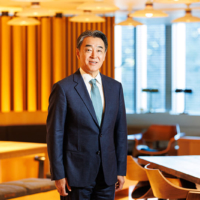Wartime U.S. President Harry Truman's decision to use the atomic bomb remains controversial. Until Murray Sayle's seminal article in the New Yorker (July 31, 1995), it was generally agreed that the atomic bombs were decisive in forcing Japan's surrender. Sayle challenged this consensus, arguing that the Soviet blitzkrieg into Manchuria on Aug. 9 was the key factor compelling the Japanese government to surrender. Tsuyoshi Hasegawa confirms Sayle's thesis, arguing that "the Soviet entry into the war played a greater role than the atomic bombs in inducing Japan to surrender."
In Hasegawa's view, Japan would have continued to fight despite the atomic bombs if the Soviets had not attacked, but would have surrendered without the atomic bombs soon after the Soviets attacked. Having watched more than 900,000 Japanese die in the fire bombings of most of the nation's larger cities, the military leadership was not especially concerned about this new development in U.S. aerial attacks. But, suddenly faced with the world's best tank army in Manchuria, and the threat of a Soviet invasion of the home islands, the military knew the game was up.
Aside from furthering the debate about why the Japanese surrendered, Hasegawa makes a major contribution to our understanding about why Truman did not modify the U.S. demand for unconditional surrender in the Potsdam Proclamation of July 26, 1945. Truman was well aware that uncertainty about the Showa Emperor Hirohito's fate made it difficult for Japanese favoring peace to advocate surrender. Hasegawa suggests that Truman decided against softening the terms of unconditional surrender precisely because he wanted the Japanese to reject surrender. However, he concludes that it did not really matter whether Truman offered reassurance or not about the Emperor's fate, since Japan would not have surrendered before the Soviet attack.
















With your current subscription plan you can comment on stories. However, before writing your first comment, please create a display name in the Profile section of your subscriber account page.